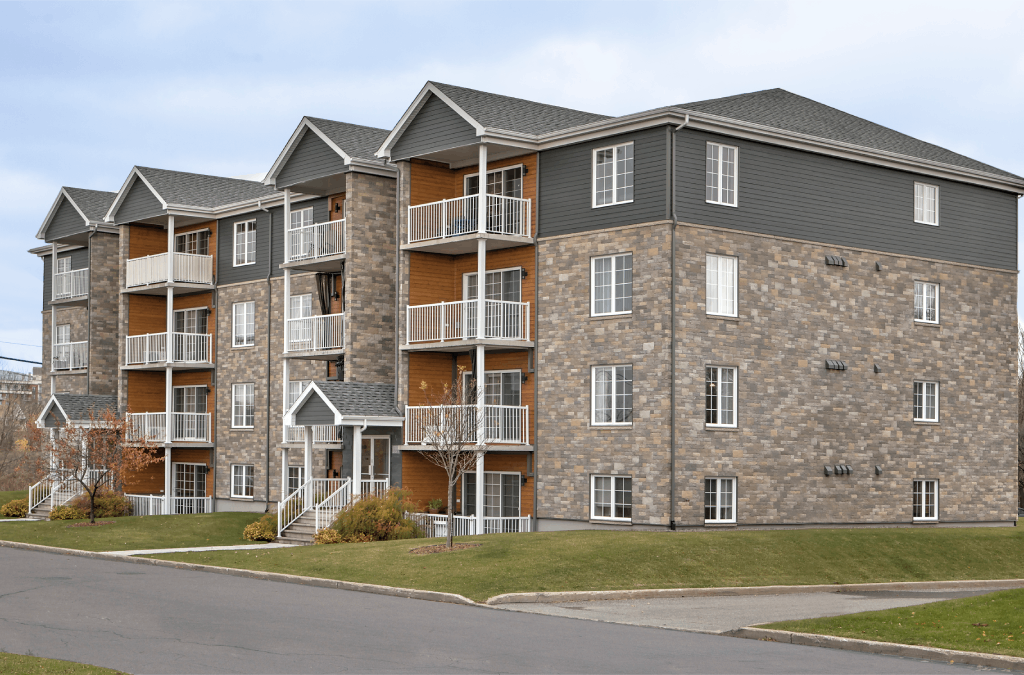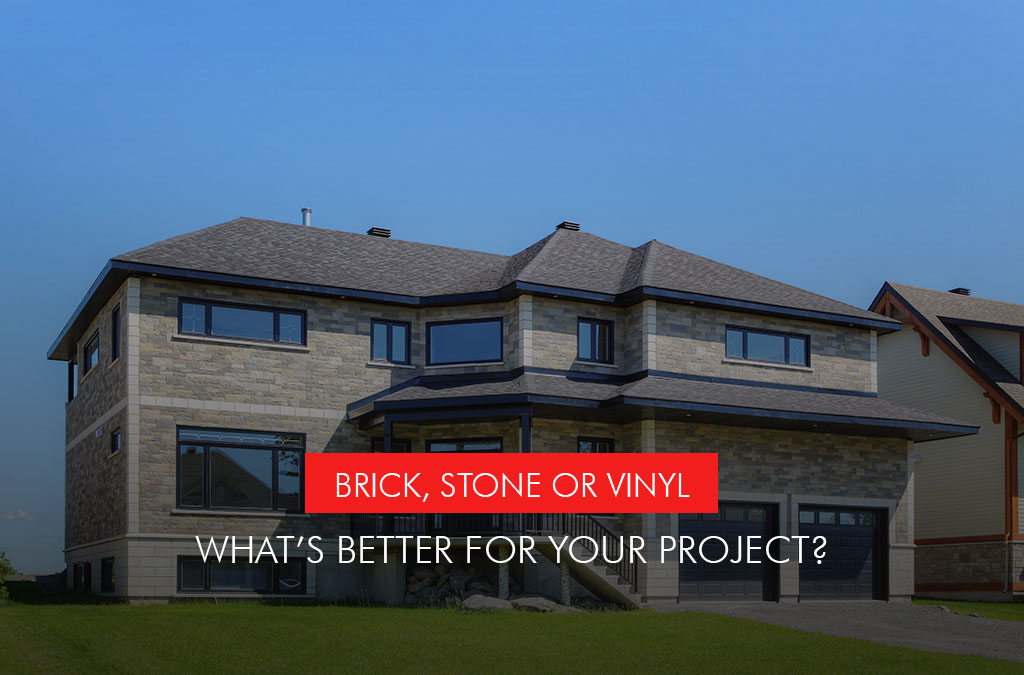Brick, stone or vinyl: What’s better for your project?
December 15, 2022
There are many factors that go into a well-done reno, including the material used to cover the outside of the home. The exterior cladding chosen by clients undoubtedly helps create curb appeal. But it can also affect the longevity of the home and the maintenance costs associated with living there.
When it’s your job to help guide the homeowner’s decision, read on for a quick refresher on popular options of vinyl, brick and stone – and learn where Fusion Stone stands out.
Vinyl
Polyvinyl chloride, also known as PVC, is commonly called vinyl when it used to cover a building. It’s ultimately a type of plastic. Initially made in the 1980s to mimic a wood look, it offers many colour and style variations. Although it doesn’t necessarily look natural, it’s appearance has come a long way in recent years. It’s also one of the most affordable siding options available and is pretty low maintenance.
However, vinyl also comes with some serious cons.
It’s best to eliminate vinyl if you’re working on a historical update or restoration as vinyl is unlikely to work well with historical designs.
Although it’s relatively easy to install, perfect installation is utterly crucial to avoid warping, bending and cracking. And, while the material can theoretically last a long time, vinyl is easily damaged by simple impacts – dents from kids at play, car doors and even hail are all possibilities. Plus, the colour and appearance will ultimately fade over time. It may also be damaged and melt in extreme heat or wildfire.
If your clients opt for vinyl, be sure to be up front with them about these risks and remember to brush up on installation techniques. Recommend the highest possible quality for the best look and longevity and review the differences in installing thin versus insulated vinyl.
Best for: Not an ideal choice
Consider other options if: Be extra careful if the project is a pre-1950s house or at risk for wildfire.
Brick
Brick is a timeless material that’s been used as siding for centuries. Initially it was a load-bearing wall material, but today it’s used as a decorative façade on top of the structural wall.
Largely durable and maintenance free, brick is also often local sourced, making it relatively sustainable. It also offers decent energy efficiency due to insulating properties.
However, brick requires a keenly skilled professional mason to install it properly. Not only are there specialized techniques for installation, it also requires strength and time to install. Without proper installation with effective use of sills, flashing and weepers, there could be issues with lime scum or moisture seepage. So, it’s crucial to call in the professionals.
Masonry is an amazing age-old craft that is worth honouring, but it can add significant time and expense to a project. On top of the materials, the cost of such experienced labour can be prohibitively expensive.
Extreme freeze-thaw conditions can also affect the longevity of mortar and lead to cracks, though overall brick homes usually have a long lifespan.
Best for: Traditional or formal design ex. colonial houses; temperate climates.
Consider other options if: your climate has significant freeze-thaw cycles; you prefer to do the work yourself.

Stone
Naturally quarried stone is beautiful and long lasting, but it can be difficult to source, costly to purchase, and require specialized masonry expertise.
Manufactured stone veneer made from aggregate stone, cement and pigments offers a valuable alternative to stones slabs cut directly from the earth. The manufacturing process can add beneficial properties such as water resistance and make stone somewhat more lightweight to install.
Stone veneer can range in price, quality and ease of install, so be sure to look for one that has pigment throughout the stone, has a moisture repellant built right in and offers the style you’re looking for.
Easy-to-install Fusion Stone has all those requirements but also helps you further save on costs without compromising on style or quality. With a lifetime warranty, it’s mechanically fastened to any OSB-covered surface and doesn’t require drying time or a mason’s expertise, so you can get the job done more efficiently. Customers even say it looks the most natural of any stone they’ve considered.
This stone veneer is also rated for installation in any season, and you won’t have to worry about mortar joints like with brick. The air gap in the patented system combined with rainscreen technology and a moisture barrier prevents excess moisture from being trapped behind the walls. It looks great covering a whole home and is also often used for accent walls or a stone wainscotting alongside other materials, adding gravity and instant curb appeal to the property.
Best for: any residential project
Check out Fusion Stone’s specially designed style and colour options.



